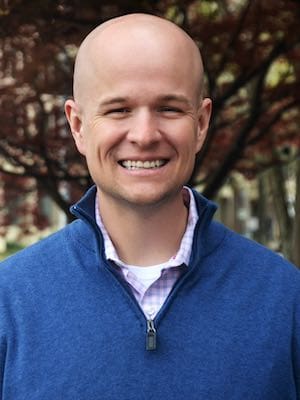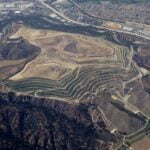How did the death of Martin Luther King Jr. on April 4, 1968, birth a black church-led movement for environmental justice?
Well, the story begins in Memphis, the city of King’s murder, where decades prior African-Americans left the cotton fields of the Mississippi Delta to do the hazardous work of waste collection in the city.
While sanitation jobs were something of a step-up, workplace conditions were oppressive with rampant racial discrimination.
Black workers received lower wages than whites and assigned the most dangerous and dirtiest tasks.
A pay dispute with Memphis’ racist mayor, Henry Loeb, and the deaths of two garbage workers – Echol Cole and Robert Walker – prompted a strike of the city’s 1,300 African-American sanitation workers.
Black pastors – some of whom were also sanitation workers – played an instrumental role in the strike and built enthusiasm for the cause in their churches as the inequalities the sanitation workers faced came to be seen as a civil rights issue.
King came to Memphis on March 18 as his movement and message was broadening to include economic issues and the rights of poor people.
That march was marred by violence but, despite this setback, King returned for one more rally on April 3 at Mason Temple Church, delivering his final speech “I’ve Been to the Mountaintop.”
While standing the following evening on the balcony of his second-floor room at the Lorraine Motel, King was assassinated.
His murder effectively ended the strike as Loeb, at the urging of President Lyndon Johnson, finally agreed to recognize the sanitation workers’ union and meet other demands.
While the term “environmental justice” was not used in 1968, the sanitation workers, black churches and King helped pave the way for a new form of justice-centered environmentalism focused on confronting racial discrimination and combating the unequal treatment and disparities that African-Americans faced in environmental policies, laws and regulations.
With the success of the Memphis strike, environmental inequalities at the intersection of race and waste emerged as a civil rights issue.
As advocates continued to raise awareness about the overrepresentation of African-Americans in dangerous waste handling occupations across the United States, a longstanding complaint began to receive attention: the placement of community waste facilities in African-American neighborhoods.
These complaints were reframed as civil rights violations and described in moral terms by black clergy.
In 1982, 14 years after the assassination of King and the end of the Memphis strike, a new movement began to take shape in Warren County, North Carolina, a rural county with the highest percentage of African-Americans in the state.
The state had selected the community of Afton as the location for a landfill to house 32,000 cubic yards of soil contaminated with toxic PCBs (polychlorinated biphenyls).
A coalition like the one in Memphis formed with black elected officials, civil rights and labor leaders and environmental activists descending on Warren County to protest the toxic dump.
Black churches and clergy were key organizers of the protests, most notably Luther Brown of Afton’s Coley Springs Baptist Church.
Every day for six consecutive weeks, protesters met at Coley Springs Baptist and marched to the dump to block the trucks delivering the toxic chemical.
More than 500 protesters would be arrested, including Walter Fauntroy – a leader in the Progressive National Baptist Convention and District of Columbia’s delegate in the U.S. Congress.
The arrests thrust Warren County into the national spotlight and directed attention to the relationship between pollution, waste and minority communities.
At the urging of Fauntroy, the Congressional Black Caucus requested that the U.S. Governing Accountability Office (GAO) examine the racial demographics of hazardous waste sites.
In its 1983 report, the GAO found that hazardous waste facilities located in the southeast United States were more likely to be found in predominantly African-American communities.
Four years later, the Commission for Racial Justice of the United Church of Christ published a landmark national study analyzing the relationship between race and the location of toxic waste.
The 1987 study found that the racial composition of a community was the single variable best able to predict the location or placement of commercial hazardous waste. While socioeconomic status was an important factor, race mattered more.
As the environmental justice movement gained momentum in the late 1980s and early 1990s thanks to the efforts of the black church, the Environmental Protection Agency created the Office of Environmental Justice to integrate the concept into its policies and programs.
Throughout the 1990s and into the 2000s, black church leaders convened conferences and educational seminars across the nation to put a spotlight on environmental injustices in communities of color.
In recent years, environmental justice has waned from the national consciousness.
This is also true in Baptist life as environmental issues have failed to sustain the interest of conservatives and centrists alike and no longer hold the same momentum and passion among progressives.
Yet, unsafe drinking water and high rates of pollution remain critical problems, specifically impacting communities of color and in need of a national solution.
The Flint water crisis, the unequal impact of climate change on communities of color, and efforts of the Trump administration’s Environmental Protection Agency to weaken rules safeguarding against toxic air pollution and protections against toxic coal ash remind us that we must not settle for environmental injustice.
King said it best when he emphasized that “we are caught in an inescapable network of mutuality, tied to a single garment of destiny.”
If we acknowledge our mutuality and shared destiny, we ought not put environmental justice issues on the back burner.
Instead, we must give voice to the environmental inequalities present in our communities just as King and the Memphis sanitation workers did 50 years ago.
And in doing so, we make our words meaningful through action, pursuing reconciliation and redemption and creating the beloved community.
Aaron D. Weaver is communications director for the Cooperative Baptist Fellowship, where he is editor of fellowship! magazine and the CBFblog. You can follow him on Twitter @BigDaddyWeave.
Editor’s note: This article is the first in a series focused on creation care for Earth Day 2018.
Communications director for the Cooperative Baptist Fellowship, where he is editor of fellowship! magazine and the CBFblog. Weaver is a member of the Commission on Creation Care of the Baptist World Alliance.





